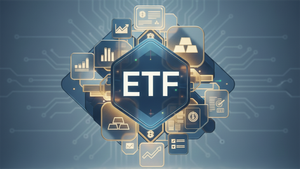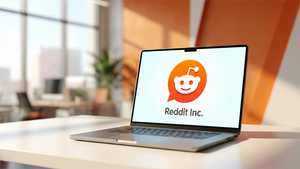
While monthly jobs reports often grab headlines, savvy investors are increasingly looking beyond employment figures to a broader array of economic indicators for a more nuanced understanding of market health. Two such crucial metrics, Personal Consumption Expenditures (PCE) inflation and the Chicago Purchasing Managers' Index (PMI), are currently providing critical insights into the U.S. economy's trajectory and influencing market sentiment. Recent readings from both indicators paint a complex picture, suggesting persistent inflationary pressures alongside a manufacturing sector still grappling with contraction, albeit with some signs of a fragile rebound.
Inflation's Stubborn Grip and Manufacturing's Lingering Woes
The latest economic data reveals a challenging environment for policymakers and investors alike. The Personal Consumption Expenditures (PCE) price index, the Federal Reserve's preferred gauge for inflation, showed a "hotter than expected" increase in June 2025. The headline PCE price index rose 0.3% month-over-month and 2.6% on an annual basis, surpassing economists' projections. More concerning for the Federal Reserve, core PCE inflation, which strips out volatile food and energy prices, also climbed, rising 0.3% from May and 2.8% from a year ago, remaining stubbornly above the Fed's 2% target. This sustained inflation, particularly in services prices, which were up 3.5% year-over-year in June, validates the Federal Reserve's decision to hold interest rates steady for the fifth consecutive meeting, maintaining them between 4.25% and 4.5%. Analysts interpret these figures as a clear signal that inflation is not cooling as rapidly as previously anticipated, suggesting that higher interest rates may persist for longer to curb price pressures.
Simultaneously, the manufacturing sector, as measured by the Chicago Business Barometer, or Chicago PMI, presented a mixed but still concerning picture. In July 2025, the Chicago PMI saw a significant rebound, rising to 47.1 from 40.4 in June, exceeding market expectations. This improvement was primarily driven by a sharp rise in new orders and order backlogs, hinting at strong regional demand. However, despite this uptick, the index has remained below the 50-point threshold for an alarming 20 consecutive months. A reading below 50 signifies contraction in business activity, indicating that the manufacturing sector in the Chicago region continues to shrink. While the July rebound is a positive sign, it underscores that the sector is still in contraction, with employment, production, and supplier deliveries showing continued weakness.
The interplay of these two indicators creates a complex narrative for the U.S. economy. Persistent inflation, fueled in part by rising services prices and the potential impact of tariffs pushing up consumer costs, suggests that the Federal Reserve will remain vigilant and potentially hawkish. Meanwhile, the manufacturing sector, despite a recent bounce, continues to signal underlying weakness, raising questions about the sustainability of economic growth. This divergence in economic signals presents a significant challenge for investors attempting to gauge the overall health of the economy and anticipate future market movements. The Fed is closely monitoring how these trade policies influence growth and inflation, with Fed Chair Jerome Powell indicating a "wait and see" approach, ready to respond quickly if inflation rises markedly or the labor market weakens.
Navigating the Crosscurrents: Winners and Losers in a Shifting Economic Landscape
The current economic climate, characterized by persistent PCE inflation and a contracting manufacturing sector, is creating a distinct divide between potential winners and losers in the public markets. Companies with strong pricing power and exposure to real assets are poised to navigate these headwinds more effectively, while those reliant on discretionary spending or facing high input costs are likely to struggle.
On the inflation front, sectors that traditionally benefit from rising prices are showing resilience. Energy companies, such as ExxonMobil (NYSE: XOM) and Chevron (NYSE: CVX), are seeing increased revenues as commodity prices climb, directly boosting their profitability. Similarly, the Materials sector, including companies like BHP Group (NYSE: BHP) and Rio Tinto (NYSE: RIO), which deal in raw materials like metals and agricultural products, often see their asset values and product prices appreciate with inflation. Real Estate Investment Trusts (REITs), like Prologis (NYSE: PLS) and Simon Property Group (NYSE: SPG), are also considered a partial inflation hedge, as property values tend to improve and rental income can increase. The Financials sector, represented by institutions such as JPMorgan Chase (NYSE: JPM) and Bank of America (NYSE: BAC), can benefit from higher interest rates that often accompany inflation, leading to increased returns on loans and credit products. Furthermore, Consumer Staples companies, including Procter & Gamble (NYSE: PG) and Coca-Cola (NYSE: KO), which produce essential goods, tend to hold their own due to inelastic demand and their ability to pass on increased input costs to consumers. The Healthcare sector, with companies like Johnson & Johnson (NYSE: JNJ) and UnitedHealth Group (NYSE: UNH), is also considered defensive, as demand for healthcare services remains relatively inelastic. Generally, large-cap companies with strong brand recognition and pricing power, as well as value stocks, are favored in this environment.
Conversely, the persistent inflation and manufacturing contraction are creating significant challenges for other sectors. Consumer Discretionary companies, which sell non-essential goods and services, are highly vulnerable as inflation erodes consumer purchasing power. Businesses like Amazon (NASDAQ: AMZN) (specifically its retail segment) and Marriott International (NASDAQ: MAR) could see reduced demand as consumers cut back on non-essential spending. The Technology sector, particularly growth stocks like NVIDIA (NASDAQ: NVDA) and Tesla (NASDAQ: TSLA), faces headwinds as higher inflation typically leads to higher discount rates, diminishing the present value of their future cash flows and negatively impacting their valuations. Industrials with high input costs or fixed contracts, such as Caterpillar (NYSE: CAT) and Deere & Company (NYSE: DE), may struggle to maintain profitability if they cannot pass on rising material and energy costs. The broader Manufacturing sector is directly impacted by the Chicago PMI's contraction, leading to reduced new orders, lower production, and potential job losses across various sub-sectors, including automobile manufacturers and metal fabrication. Companies with high debt levels will also face increased borrowing costs due to higher interest rates, further straining their financial performance.
The combined effect of these economic forces on financial performance and stock valuations is significant. Companies with pricing power and resilient demand may see revenue growth, even if volumes are stagnant. However, those in discretionary sectors and much of manufacturing will likely experience declining revenues and compressed profit margins due to reduced consumer spending and lower industrial demand. Higher inflation also drives up input costs for nearly all companies, impacting cash flows and increasing the cost of borrowing. For stock valuations, higher inflation and interest rates lead to higher discount rates, disproportionately hurting growth stocks. This environment is likely to increase market volatility, as investors rotate out of vulnerable sectors into those perceived as more resilient or inflation-resistant, such as large-cap stocks and certain commodity-related assets.
Industry Impact and Broader Implications
The current economic landscape, marked by persistent PCE inflation and a contracting manufacturing sector, is not an isolated event but rather fits into broader industry trends, signaling a challenging environment with potential ripple effects across the economy. This confluence of factors bears a striking resemblance to historical periods of "stagflation," where high inflation coexists with stagnant economic growth and elevated unemployment.
A significant trend emerging from these conditions is sectoral divergence. Investors are actively reallocating their portfolios, favoring more defensive sectors such as Healthcare, Utilities, and domestic manufacturing firms with minimal reliance on imported inputs. This shift is evident in the underperformance of cyclical sectors like Automobiles, Machinery, Steel, and Consumer Discretionary goods, which are more susceptible to economic downturns and reduced consumer spending. The persistent core PCE inflation, currently at 2.8% year-over-year and exceeding the Federal Reserve's 2% target, is largely driven by tariffs on imported goods and rising costs in service sectors like healthcare, shelter, and dining out. Simultaneously, the Chicago PMI's prolonged contraction reflects weak demand for durable goods, declining new orders, and reduced production, putting a squeeze on profit margins as businesses struggle to pass on all increased costs to consumers.
The ripple effects of these conditions are felt throughout the supply chain and competitive landscape. Businesses, particularly those in energy-intensive industries or heavily reliant on imported raw materials, face skyrocketing operational expenses due to inflation and tariffs. This makes it difficult to maintain pricing power, leading to squeezed profit margins if costs cannot be fully passed on to consumers. High inflation also erodes consumer purchasing power, leading to decreased disposable income and a reduction in spending on non-essential goods and services, directly impacting businesses in discretionary sectors. Furthermore, tariffs and global supply chain disruptions are compelling companies to re-evaluate their strategies, potentially leading to efforts to diversify suppliers, localize production (reshoring), or find alternative routes to mitigate higher costs and uncertainties. In a shrinking market, competition for fewer available orders can intensify, potentially leading to price wars or increased pressure on innovation to capture market share.
From a regulatory and policy standpoint, the Federal Reserve faces a delicate balancing act. With core PCE inflation remaining above its target, the Fed is under pressure to maintain a restrictive monetary policy, potentially by holding or even raising interest rates to curb inflation. However, such measures risk further exacerbating the slowdown in economic growth and employment, which is already evident in the contracting manufacturing sector. Fiscal policy also faces challenges, as historical attempts to stimulate economic growth through increased government spending during periods of stagflation have often exacerbated inflationary pressures without significantly reducing unemployment. Current tariff policies are a direct contributor to inflationary pressures on goods, forcing policymakers to weigh the intended benefits of tariffs against their inflationary impact and potential for broader economic slowdown.
The most significant historical precedent for the current economic conditions is the stagflation of the 1970s. This period was primarily triggered by supply shocks, notably the 1973 oil crisis, which led to a sharp increase in energy prices and production costs. This was compounded by misguided government policies that expanded the money supply too rapidly and entrenched inflation expectations. The 1970s saw rising production costs, reduced consumer spending, a significant decline in productivity growth, high unemployment rates, and slow economic growth with multiple recessions. The Federal Reserve, under Chairman Paul Volcker, eventually adopted an aggressive monetary policy, sharply increasing interest rates to control the money supply and break inflationary expectations, albeit at the cost of a severe recession in the early 1980s. While the current situation is not a direct replica, the parallels in persistent inflation, slowing growth, and supply chain pressures offer valuable lessons for businesses and policymakers alike.
What Comes Next: Navigating Uncertainty and Seeking Opportunity
The U.S. economy stands at a critical juncture, grappling with the dual challenges of persistent PCE inflation and a contracting manufacturing sector. The path forward is uncertain, presenting both short-term hurdles and long-term possibilities that will necessitate strategic pivots for businesses and reshape market opportunities.
In the short term, the economy faces a delicate balancing act. Persistent PCE inflation, particularly in core goods due to tariffs, suggests that consumers and businesses will continue to face higher costs, potentially leading to further erosion of purchasing power. The contracting manufacturing sector implies ongoing challenges for businesses in this area, including reduced industrial activity, potential job losses, and supply chain vulnerabilities. The Federal Reserve is likely to remain cautious about interest rate cuts until it is confident that inflation is sustainably moving towards its 2% target, with the next PCE data release on August 29, 2025, being critical for shaping market expectations. Real consumer spending has already slowed, a trend expected to continue, with some economists warning that the U.S. economy is "on the knife's edge of recession" due to stalling consumer spending, contracting manufacturing and construction, and a slowdown in job growth.
Looking further ahead, several long-term possibilities emerge. While the Fed anticipates a longer path to its 2% inflation target, potentially extending into 2027, the inflationary impulse from tariffs is expected to be temporary, allowing for slow rate cuts throughout 2026. Despite the current manufacturing contraction, long-term policy aims, such as the One Big Beautiful Bill Act (OBBB) signed in July 2025, aim to catalyze domestic production through tax incentives for production facilities until 2029. This could lead to growth in non-advanced durable manufacturing and nondurable manufacturing, though advanced manufacturing might still face headwinds due to tariffs on critical components like semiconductors. The services sector, particularly healthcare and financial services, has been a significant driver of GDP growth and may continue this trend. The vulnerabilities exposed by global disruptions and tariffs are also accelerating trends towards nearshoring and reshoring, aiming to reduce supply chain risks and improve lead times.
For businesses, strategic pivots and adaptations are crucial. Companies must carefully analyze their real business costs and implement strategic pricing approaches, potentially passing costs onto customers or adjusting features to lessen the perceived impact of price hikes. Diversifying sources of raw materials and inputs, establishing alternate supply chains, and considering nearshoring or reshoring are critical to mitigate risks from tariffs and supply chain volatility. Cost management and efficiency are paramount, involving identifying and cutting non-essential expenses, streamlining product portfolios, and leveraging automation and digital technologies. Robust cash flow and financial management, including regular reporting, monitoring working capital, and scenario planning, are essential. For longer-term contracts, businesses should review terms to ensure flexibility for price adjustments and consider negotiating easier exits. While investment may slow in the short term, tax incentives for domestic production facilities could encourage long-term investments in non-advanced manufacturing.
Market opportunities and challenges will emerge from this evolving landscape. Challenges include margin compression due to rising input costs and consumer resistance, reduced discretionary spending, and sectoral headwinds for cyclical industries. The potential for continued tightening of monetary policy could also lead to higher borrowing costs. However, opportunities exist in inflation-hedging sectors like energy and healthcare, as investors reallocate portfolios. Government policies and the desire for supply chain stability creates opportunities for domestic production and industries with strong domestic supply chains. The resilience of the U.S. services sector, particularly healthcare and financial services, presents ongoing opportunities. The need to combat rising costs will also drive innovation in operational efficiency, automation, and new material processing techniques.
Several potential scenarios could unfold. A "soft landing," where inflation gradually recedes without a significant economic downturn, is becoming increasingly challenging given the persistence of core PCE inflation and the prolonged manufacturing contraction. A "stagflationary environment," characterized by persistent high inflation coupled with stagnant or contracting economic growth, remains a distinct possibility. Some economists warn of a "mild recession" driven by stalling consumer spending and manufacturing weakness. Alternatively, a "gradual recovery with sectoral divergence" could see the overall economy experience slow growth, but with significant differences between sectors, as the services sector continues to perform relatively well while manufacturing struggles to recover. Businesses that prioritize adaptability, robust cost management, diversified supply chains, and strategic pricing will be better positioned to navigate these challenges and capitalize on emerging opportunities.
Conclusion: A New Economic Reality Demands Vigilance
The U.S. economy is undeniably entering a new phase, one where the traditional focus on jobs reports alone is insufficient to grasp the full picture of market health. The persistent Personal Consumption Expenditures (PCE) inflation and the prolonged contraction in the Chicago Purchasing Managers' Index (PMI) are not merely isolated data points; they represent fundamental shifts that demand heightened vigilance from investors, businesses, and policymakers alike.
The key takeaway from the current economic landscape is the stubborn nature of inflation, particularly in core goods and services, and the underlying weakness in the manufacturing sector. This combination creates a challenging environment, reminiscent of historical periods of "stagflation," where rising prices coexist with slowing economic activity. The Federal Reserve's cautious stance on interest rates, driven by the need to tame inflation, will continue to influence borrowing costs and investment decisions across the board. Meanwhile, the manufacturing sector's struggle, despite recent upticks, signals a need for deeper structural adjustments and a re-evaluation of global supply chains.
Moving forward, investors should prioritize a nuanced approach, looking beyond headline figures to understand the intricate interplay of these economic indicators. Companies with strong pricing power, resilient demand, and diversified supply chains are likely to outperform, while those heavily reliant on discretionary spending or facing significant input cost pressures will continue to face headwinds. The trend towards reshoring and nearshoring, driven by supply chain vulnerabilities and policy incentives, presents both challenges for established global supply chains and opportunities for domestic manufacturing.
In the coming months, investors should closely watch for further PCE inflation data to gauge the effectiveness of the Federal Reserve's monetary policy and any shifts in its stance. The Chicago PMI and other regional manufacturing indices will provide crucial insights into the pace of recovery or continued contraction in the industrial sector. Additionally, monitoring consumer spending patterns, particularly in discretionary categories, will be vital for assessing the impact of inflation on household budgets. The current economic reality demands adaptability, strategic foresight, and a keen understanding of these interconnected indicators to navigate the evolving market landscape successfully.




